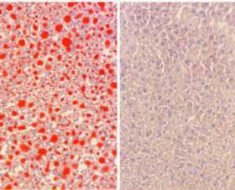
Medicare-covered stroke patients receive vastly different amounts of physical and occupational therapy during hospital stays despite evidence that such care is strongly associated with positive health outcomes, a new study by Brown University researchers found.
The research team, led by Amit Kumar, an adjunct assistant professor at Brown’s School of Public Health,analyzed Medicare claims data from 2010 for approximately 104,000 stroke patients. They found that 15 percent of patients received no physical therapy (PT) or occupational therapy (OT), while on average stroke patients received 2 hours of therapy during their hospital stay. Some patients received almost 4 hours of therapy, but these tended to be patients with the longest hospital stays, Kumar added.
“For stroke patients, rehabilitation services are one of the most important components in providing treatment after they are stabilized in the acute setting,”said Kumar, who is also an assistant professor of physical therapy at Northern Arizona University. “This is the only treatment that helps patients regain activities for daily living, such as walking or using the restroom independently. So it’s really important to start physical therapy and occupational therapy as early as possible.”
The findings were published on Wednesday, April 24, in the Physical Therapy Journal.
The paper builds on additional work from the same group published January in the Archives of Physical Medicine and Rehabilitation. That study showed that stroke patients who receive more PT—which helps patients restore movement to parts of the body affected by a stroke and regain functions such as walking, balancing or moving their arms—have lower risks of hospital readmission within a month after discharge.
In fact, Medicare patients diagnosed with an ischemic stroke—the most common type of stroke, which occurs when a brain artery becomes blocked, reducing blood flow—who received 75 minutes or more of PT while in the hospital were 14 percent less likely to be readmitted than those who received none. Even 30 minutes lowered the risk of readmission by 10 percent.
Yet the researchers found that the amount of OT, which focuses on helping patients to regain facility with everyday tasks such as getting dressed or using the restroom, had minimal impact on readmission risks.
Kumar believes that PT reduces the risk of hospital readmission two ways. One, it helps patients restore movement and regain the ability to accomplish tasks. Second, it allows physical and occupational therapists to play a role in planning for and preparing patients for the next stage of post-acute care—whether that is an inpatient rehabilitation facility, a skilled nursing facility or the patient’s home, with home health care assistance.
In the second paper, the research team found that 61.5 percent of stroke patients received both PT and OT services, 22 percent received only PT, 1.7 percent received only OT and 15 percent received neither PT nor OT. For patients who received physical or occupational therapy, on average they received 14 more minutes of therapyfor each additional day spent in the hospital.
Patients who were dually enrolled in Medicare and Medicaid, indicative of more complex clinical needs and lower socioeconomic status, were 16 percent less likely to receive either rehabilitation service. Patients who had a feeding tube inserted, indicative of a severe stroke, were 53 percent less likely to receive rehabilitation services, the researchers found. The findings indicate a failure to provide rehabilitation care to patients with more complex needs and with more severe conditions, they said.
Patients treated in a hospital with more than 370 stroke patients a year were more likely to receive rehabilitation services but received 6 fewer minutes of therapy on average than those at hospitals with fewer than 124 stroke patients a year.
On the other hand, patients treated in a hospital with an inpatient rehabilitation unit were more likely to receive rehabilitation services and received 8 more minutes of therapy, on average. This indicates that financial incentives established by the Centers for Medicare and Medicaid Services, such as bundled payment programs, appear to be effective at improving the coordination of acute and post-acute care and improving patient outcomes, Kumar said. In the first study, his team found that patients treated in a hospital with an inpatient rehabilitation unit were 8 percent less likely to be readmitted.
Now Kumar is looking at 2017 Medicare claims data for a variety of potentially disabling conditions including stroke, heart failure, joint replacement and hip fracture to see if Medicare policy changes since 2010 have improved the amount of rehabilitation services patients receive. Kumar will also examine when rehabilitation services are initiated to see if that has an impact on patient outcomes.
Currently there are no clear guidelines for the timing and amount of rehabilitation services offered during hospital stays, Kumar said. And the current Medicare diagnostic-based reimbursement model for hospitals doesn’t include metrics for patient functional status or rehabilitation services, which may disincentivize providers from recommending rehabilitation services, he added.
Source: Read Full Article





